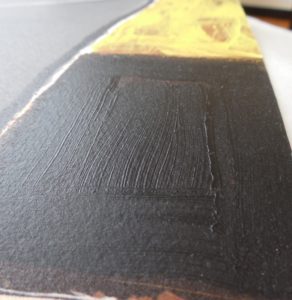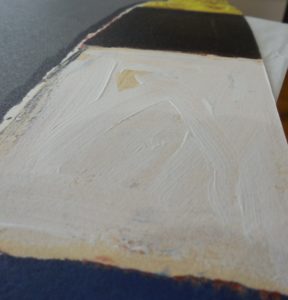Hugo Duchateau (Belgium 1938)
“Untitled”
Monoprint (Lithograph with hand embellishment)
1/100
Signed, numbered & dated in pencil LR
27½″ x 19½” paper
$300.00

Signature, Edition & Date in pencil LR

Hand embellishment in black

Hand embellishment in white
Duchateau’s response to a question regarding the hand embellishing… “I have indeed added painted spots onto each of the hundred lithos, but always in different places at the right hand side and with different colours, and always for instance red acrylic paint on red ink. i did this in order to give a unique feature to each litho, and also to start a bit of confusion.
Hugo Duchateau is part of the flow of fundamental painting. Like Luc Tuymans, Raoul De Keyser and Vincent Van Den Meersch, he explores the cornerstones of painting: the color, the form, the material and the effects that these aim at. Hugo Duchateau goes one step further, to hyperrealism. He concentrates on the carrier, the tools, the matter, the tension between creation and creation. In his earliest work, Hugo Duchateau examines the tools of the artist: he paints painting and draws the drawing from the wonder of man as a mechanical engineer and the tool as an extension of the ingenious hand. Pencil, paper, paint brush, paint, pen, charcoal, all are subjected to the artist’s gaze. Later he makes objects and installations around the same theme. Hugo Duchateau broadens his vision over the years. From the tension between the artist and his tools, the emphasis shifts to the relationship between nature and culture. In his paintings lines and surfaces seem to have their own will: they form a game of controlled chaos in which the artist can experiment with color, form and substance. And increasingly he also dares to get off in object and installation art. From the 90s, Hugo Duchateau let nature – and therefore the subject matter from which he makes his works – free. The paint drips, apparently at will, over the canvas; the comb draws random lines; the installations proliferate … The artist’s miracle is only to know when nature has done its work, when the artwork is art.

